Finance
A Peek Into the Last Few Weeks (and our family vacation!)
How to get a shower and get ready for the day when you’re taking care of two babies! 🙂

People ask me all the time how I’m doing with having two babies and I think this early morning picture says it all. Life is full, my hands are full, and my heart is so full! (By the way, I’m actually putting this post together while trying to bounce Kierstyn to sleep in the Baby K’tan… it’s rare that I don’t have at least one baby in my arms these days!)

How could my heart not be full when this is an almost daily site at our house!

Silas had another weekend baseball tournament at a town about an hour away (Murfreesboro). We had fans set up with a generator, tents, lots of cold drinks in coolers, and these cold wraps to keep everyone cooled down

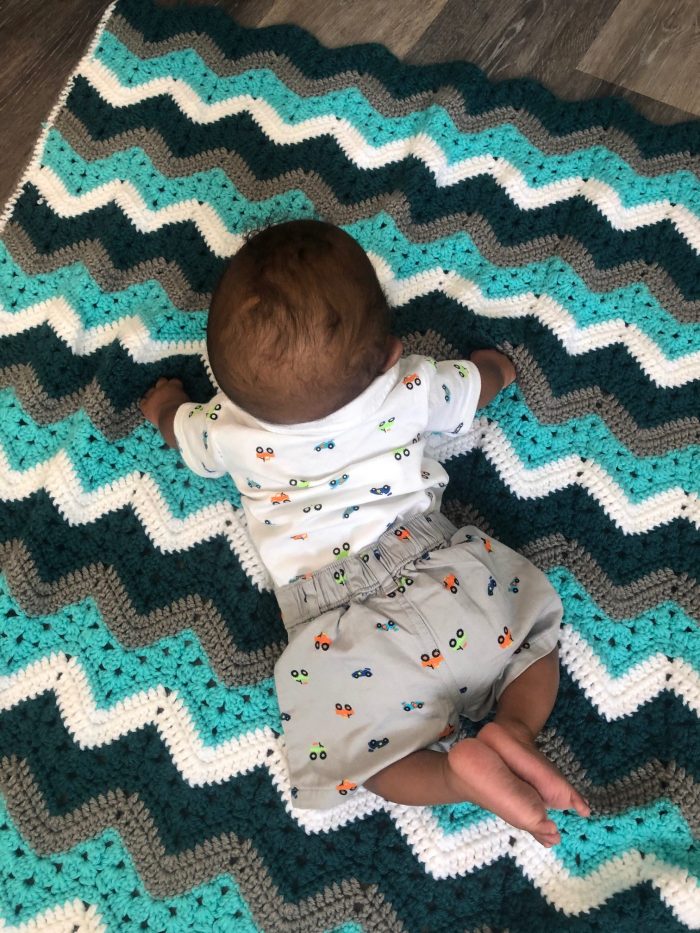
Champ has been learning how to hold his head up and roll over!
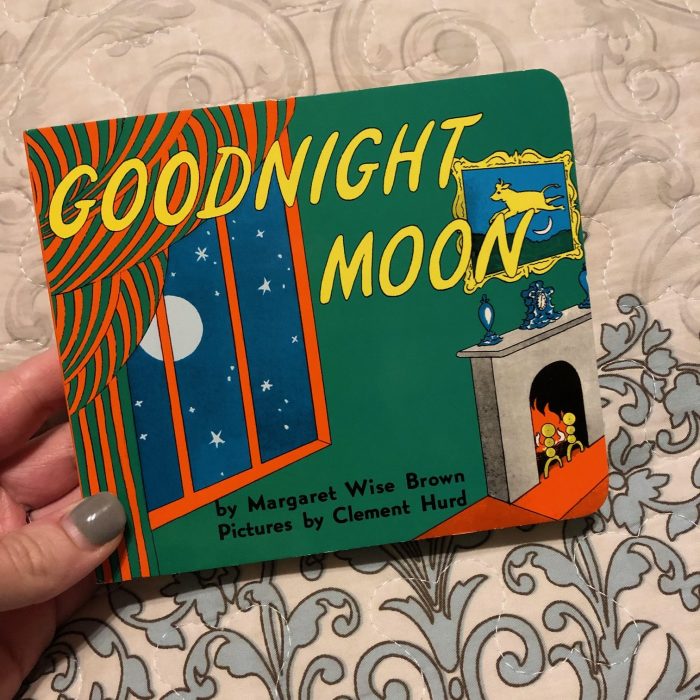
The babies have started to love having books read to them. Goodnight Moon was Silas’ favorite book when he was little, so it’s been so fun to introduce the babies to this book!
We packed for our family trip in tubs — each person got a tub for the week. This saved so much space in our vehicle and made things much more organized!
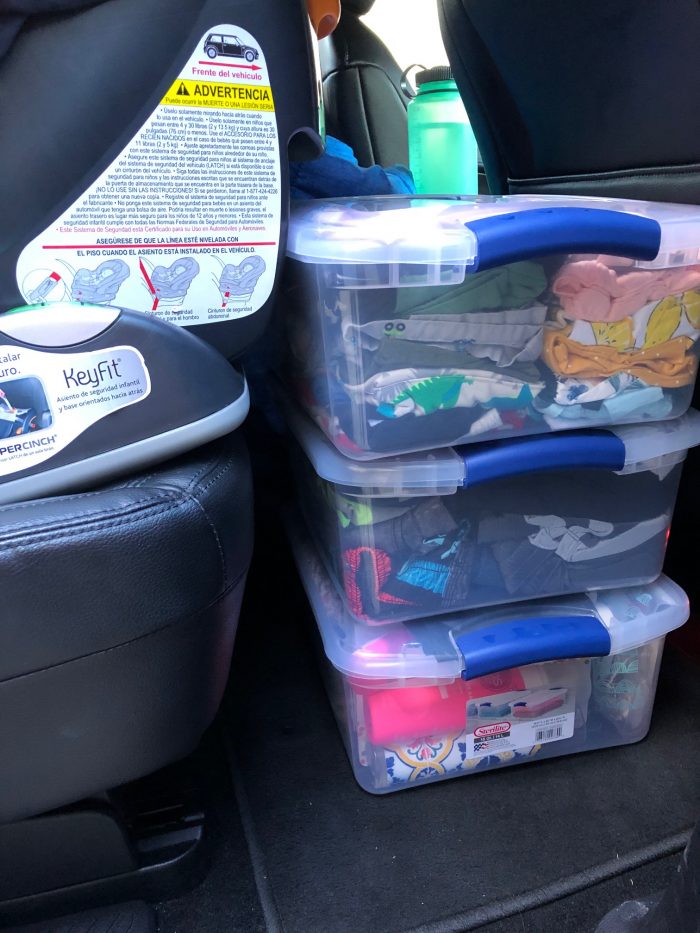
Our one out of state trip this summer was to go meet up with my family at Bull Shoals Lake in Arkansas. We weren’t sure if the trip was going to happen due to COVID-19, but because of a number of safety measures we put into place, DCS gave us special permission to be able to go and take Champ with us.

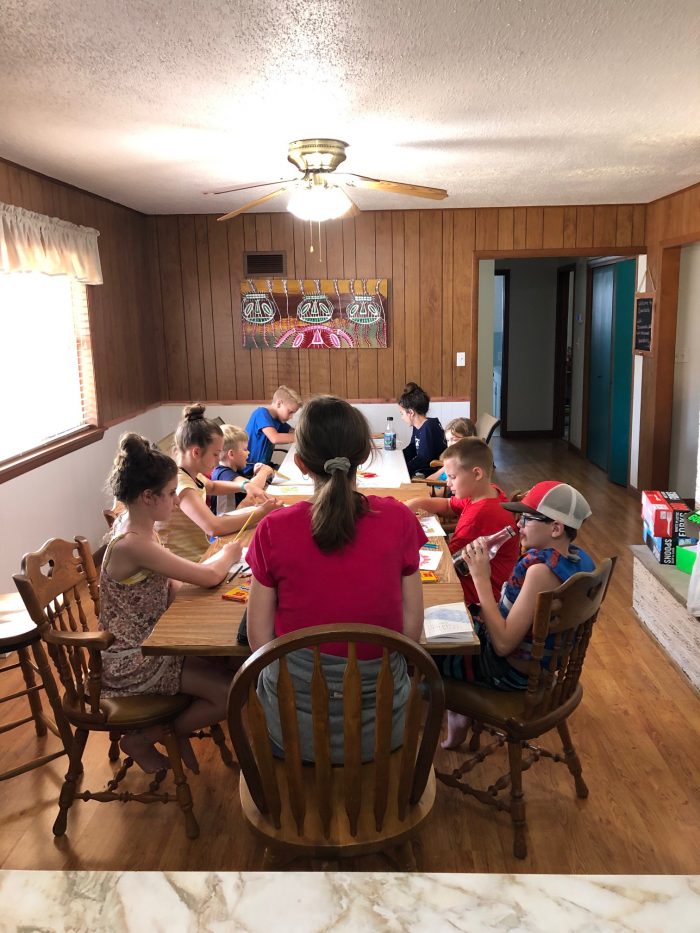
Every afternoon during our annual extended family lake vacation, my mom has “Grandma Time” with her grandkids. She teaches them a Bible lesson, they do a craft, have a snack, and do a game together.
Over the past two years, the older grand kids have started helping out. This year, each of the older ones signed up to help out with a craft and/or a snack and then Kathrynne is in charge of games (complete with an elaborate ticketing system and prizes they can turn their tickets in for at the end of the week ala Chuckie Cheese style!)
As many of you know, my mom had some serious health issues last year, including multiple extensive surgeries and skin grafts for skin cancer. She also got really sick with pneumonia in the middle of all that.
She almost didn’t get to come on the annual lake vacation last year. She did come, but she was so weak and sickly that I wondered if she’d make it another year.
This year, at 66 years old, she’s stronger than ever — not only leading Grandma Time, but also skiing and helping with the babies and cooking and looking for ways to reach out and serve all day long.
I know many of you prayed for her last year and I just wanted to tell you thank you, again! I look at this photo I snapped earlier this week and it just reminds me to be grateful for the many gifts it represents.
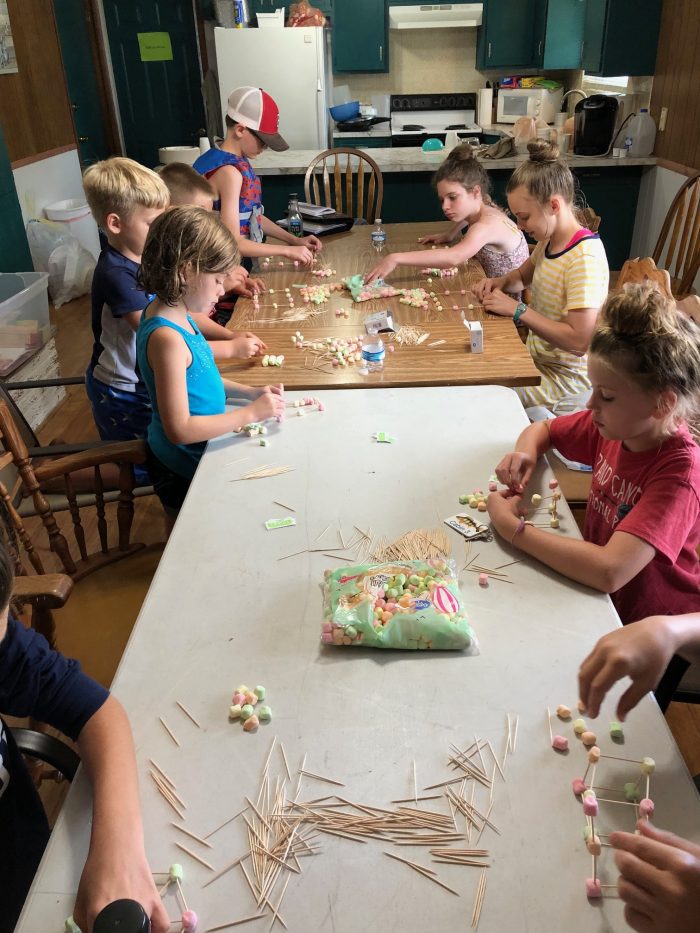

Her first time in a pool!
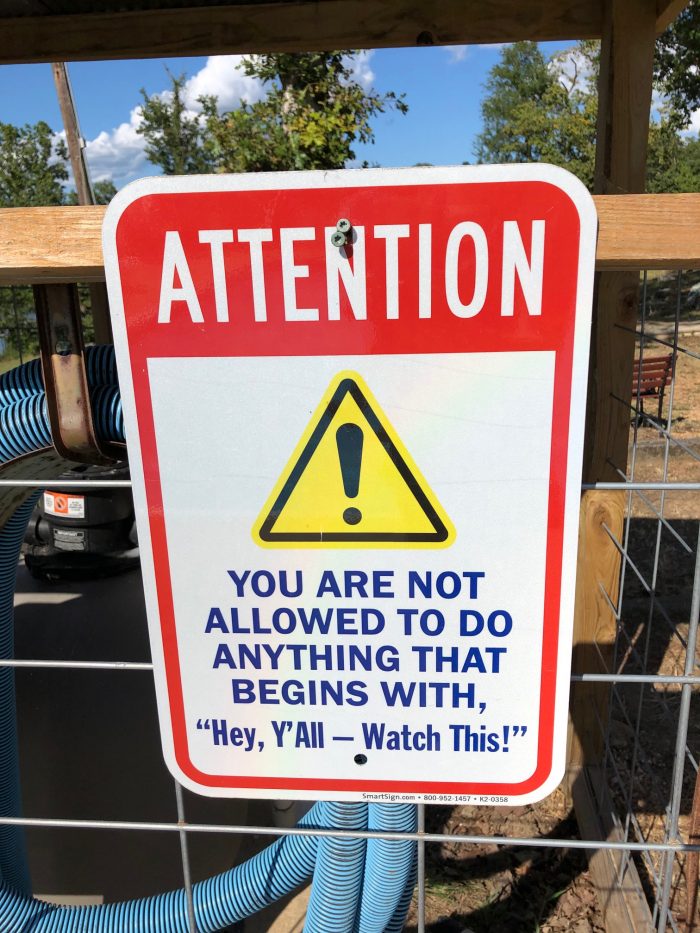
They had this sign at the pool! 😉

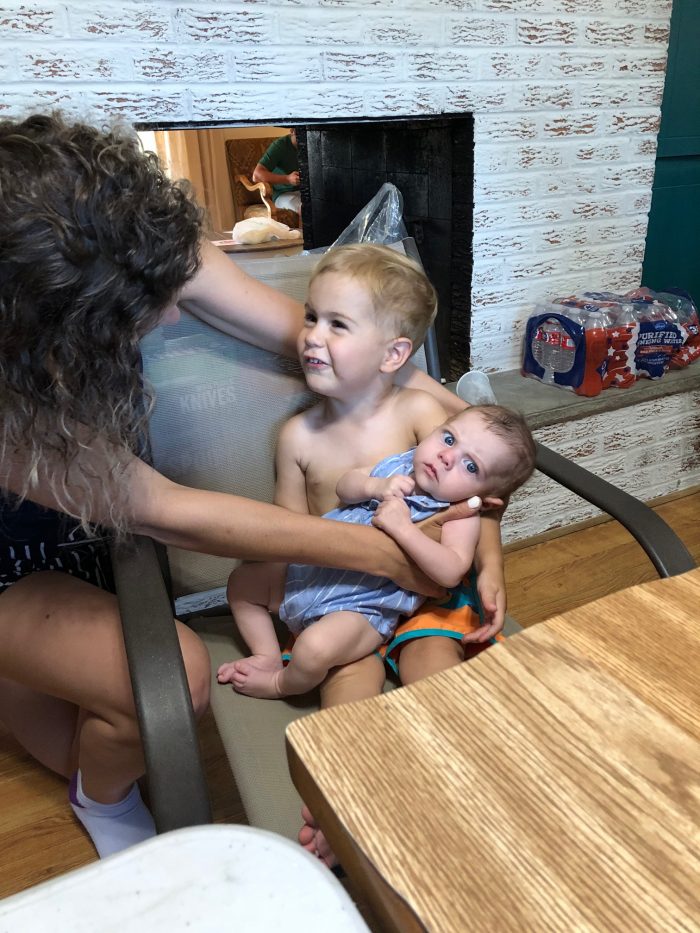
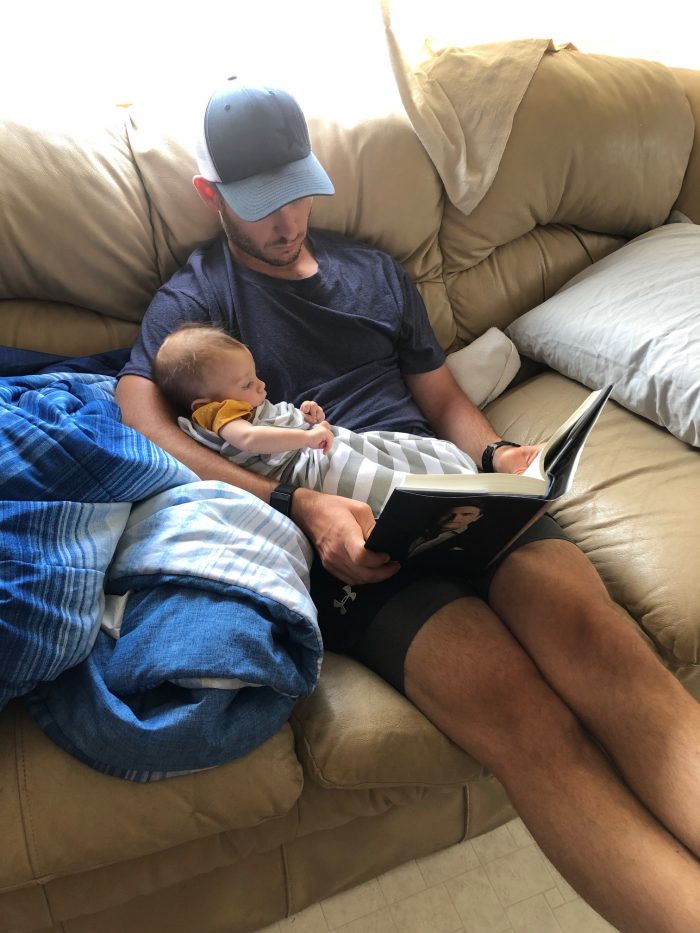
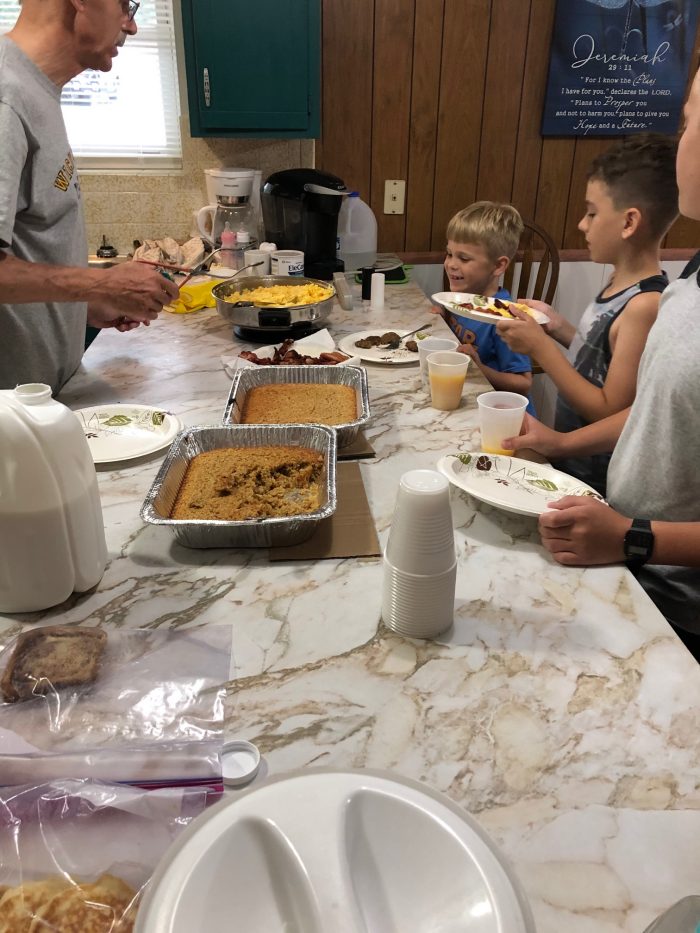


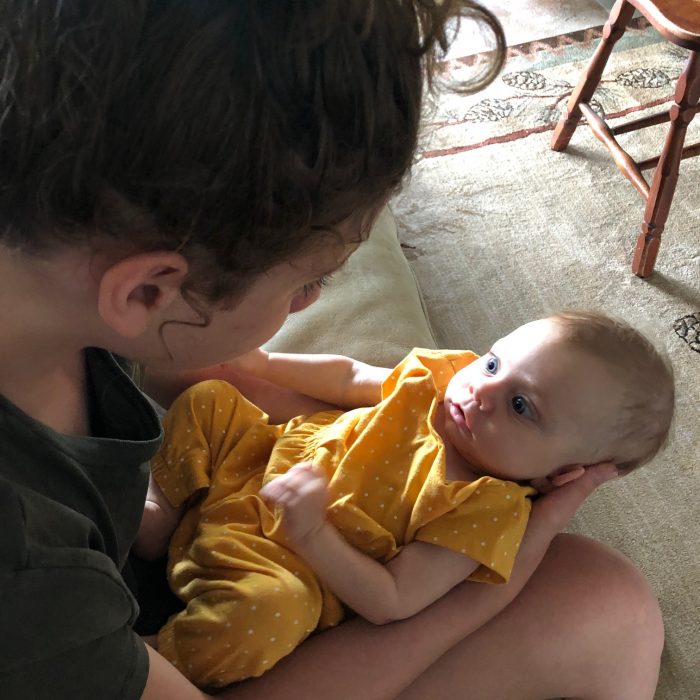
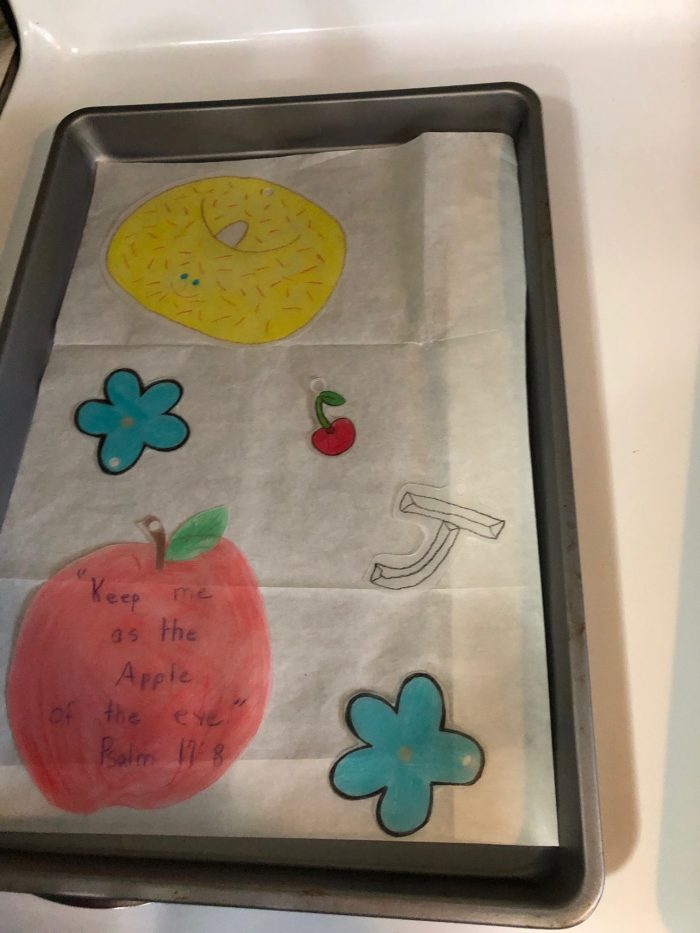


For details on how we all pitch in on meals and clean up, check out this post.





One of my favorite parts of our extended family vacations: the daily salad bars we have.



On our way home, we stopped by Ozark, MO so the girls and I could go in to the discount store there. (More details on what we bought coming this weekend!)

Jesse’s parents and his sister, Lisa, drove from Kansas to meet up with us so they could meet the babies, too.
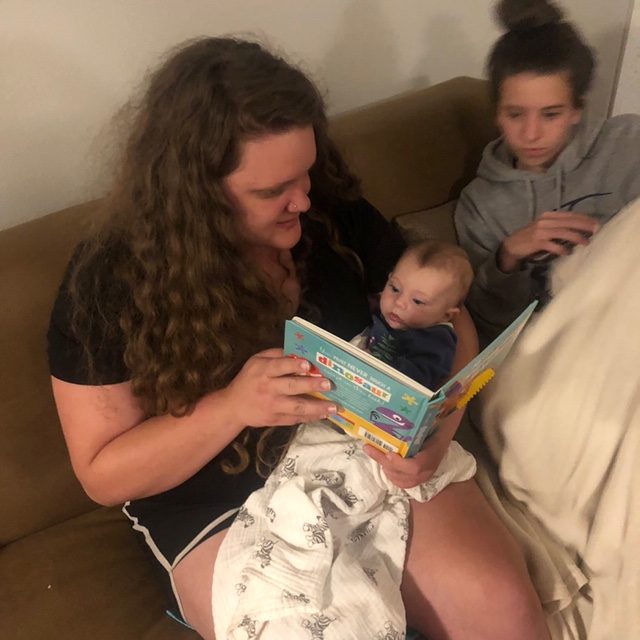
I’m so grateful we got to spend time with extended family. This year certainly has made us so much more grateful for this!

A year ago, we were in the middle of our foster care home study and praying for who God would bring into our home for us to love on.
We were at peace about pursuing this path, but we were still apprehensive and wondering what it might mean for our future. There were so many unknowns, so many what if’s, and so many things outside our control.
I look back on this last year and the 5 children we’ve had the privilege to have in our home — 4 for just a very short-term stint and sweet little Champ who has been with us for almost 4 months.
There are still just as many unknowns, what if’s, and things outside our comfort zone. My heart has been broken in a hundred little pieces over the things we’ve seen and witnessed firsthand and the many kids and their stories whom we weren’t able to say yes to. I’ve cried more tears in the last 10 months than I’ve cried in the last 10 years (okay, pregnancy and postpartum probably played a part in that!).
And yet, my heart is fuller and happier than I can ever remember. The opportunity to love, pour into, and nurture has filled me up in the deepest of places. Seeing my husband and kids sacrifice and serve and love so well has been one of the most amazing experiences.
I don’t know what the future holds. I can imagine it will be full of heartbreak and beauty, tears and love, a roller coaster of emotions, and many things I can’t even imagine.
There are many unknowns, but this one thing I know: I don’t regret for one second saying “yes” to foster care. I look at these pictures and think, “We could have missed this.”
Finance
You’re Budgeting WRONG If You Do Any Of These 5 Things
(The following is an abbreviated transcription from a video Linda & I recorded. Please excuse any typos or errors.)
For most people, budgeting is a scary word.
If you feel that way about budgeting, you might be doing one of these five things wrong (or maybe all of them).
When you’re doing any one of these things, it’s just going to make budgeting really difficult and not a lot of fun for you.
We’re going to talk about what these things are and hopefully how to fix it so that you can actually enjoy budgeting and get a ton of benefit from it.
And, if you hate budgeting (or scared of it), just know you are not alone.
Linda actually hated budgeting before I got her on board. I am convinced from all the people, the readers, the podcast listeners, everybody else over the last 10 years who we’ve talked to, the reason so many people hate budgeting is that they’re doing it the wrong way.
Using The Right Tool For The Job
So I do a lot of work around the house and I have often found myself in a position where I’m really far away from the workbench, or really far away from the garage, and I have something else going on and I need to hammer this nail in. And so I’ll try to grab something. I’m like, “What is around that I can kind of hammer this nail in?” Do you want to know what? Nothing works good at hammering a nail in except for a hammer.
And so this is what it’s like for so many people when they’re budgeting using the wrong tools, the wrong methods. Well, of course it’s not working well. And of course it isn’t fun. And of course you hate it because they’re doing it the wrong way.
But when you use a tool the right way, it is actually a lot of fun. And it gets the job done a whole lot quicker and easier.
Linda and I discussed the 5 budgeting things you may be doing wrong, and you can watch our discussion here (or read the transcript below):
Bob: All right. And if you haven’t grabbed our free budget worksheet, definitely pick that up first. That’ll be a good starter, good primer for you to get up and running with your budget.
1. You Aren’t Actually Budgeting
Bob: Number one is that you aren’t actually budgeting. So this is a funny thing. A lot of people think that their budgeting when they’re just tracking their money and they’re using Mint or some app to see where their money went.
Linda: So tell us what the difference is.
Bob: So tracking your money and knowing where it went is a good first step. That is an important part, but it’s not budgeting. Budgeting is actually telling your money where you want it to go and actually having a plan in place to make sure that it goes where you want it to go.
2. You Aren’t Budgeting For Fun Things
Linda: Yep. Okay. So number two is not budgeting for fun things. So there are big things that we need to budget for, right? Like a house payment and savings, you know?
Bob: Groceries. We need to eat.
Linda: Right.
Bob: Yeah.
Linda: But you have to budget for things that are fun. Things that fill your soul.
Bob: And if you don’t, you’re not going to last, right.
Linda: Right.
Bob: Could we have ever done this without doing that?
Linda: No. No. So we really enjoy going out to eat. I mean, it is peach season in Tennessee right now and-
Bob: And our grocery budget has expanded to pull in the dozens upon dozens of peaches nearby.
Linda: Yeah. Or another good example is like going out for donuts on Saturday morning. Anything that you just really enjoy doing that has to be part of your budget because then it’s like, “Oh, well I have money to spend on this.” And you pretty much have to spend it. Right?
Bob: Yeah. And so while doing this might slow down your progress towards paying off your debt or retirement savings or something like that because you think, well, I don’t want to do any fun stuff. I just want to do the essentials so I can pay off my debt as soon as possible. And it’s like, you can maybe make that work and sustain that for a little bit. But for most people it’s worth reducing that just a little bit to have a little bit more fun in your budget.
Linda: Totally.
Bob: If you’re going to enjoy the budget, and if you’re going to stick with it for years and years to come. So it’s a better move in the long run for most people to just make sure that there’s stuff allocated for fun stuff.
Linda: Yep.
3. You Are Trying To Do It Solo
Bob: Number three, if you’re married and you’re trying to do it solo-
Linda: It’s a bad idea.
Bob: And I do know for most of you, this isn’t by choice. You have a spouse who just isn’t interested, but there are things you can do to kind of sweeten the deal for your spouse and to try to get them interested in the whole budgeting concept. And we go into this in detail in a real money method course, but there’s a couple tips that we can kind of share. Like how did I get you on board? Like what helped?
Linda: The thing that helped me was things that I got freaked out about were in the budget. So when we had car problems, there was money sitting in the budget so there was not that freak out moment for me of like, where the heck are we going to get this money?
Bob: Yeah.
Linda: It was just sitting there. So another one was the rewards. When we hit a milestone, we would do some celebrating.
Bob: Yeah.
Linda: It was small for us, but it can be whatever you want it to be. You know? And then the other thing was budgeting for things that I needed, that I wanted and that I needed in my life. So yeah. It not being perfect, but actually us sticking with it was huge.
Bob: Good enough to get us both on board.
Linda: Yeah.
Bob: Yeah. So bottom line, if you have a spouse, who’s not on board, it’s just more difficult. Now, if you can’t get them on board, you still need to move forward. It’s still beneficial that you’re at least trying and attempting and doing the best that you can in those circumstances. And I think some of the best advice here is just to be asking God and to be praying about how you guys can both get on the same page.
Linda: Yeah.
4. You Don’t Have A Reason Why You Are Budgeting
Bob: All right. Number four is that you need a reason why you are budgeting. You know, as humans, we are just hardwired for significance and meaning, and we need to have a reason why we’re doing everything that we’re doing.
Linda: So one of my first introductions into budgeting was pre-Bob if you can believe it. My brother came over and helped me set up a really simple budget so that I could save for my first car. And that gave me so much incentives because I was like, “I really want a car. I have got to get to the place where I can have a down payment, but also be able to pay for it each month.”
Bob: And the budget was what was going to help you get there.
Linda: Exactly. So I knew that that’s why I was doing it. And I stuck to it because I had this goal out in front of me. So having a reason why was a huge part in me sticking to it.
5. You Are Using A Method That Isn’t Holding You Accountable
Bob: Yeah. All right. Number five is that you’re using a budgeting method of some sort that isn’t actually holding you accountable. So over the last 10 plus years, I’ve been looking at budgeting stuff left and right, budgeting apps, budgeting spreadsheets, budgeting software.
As a financial blogger, I’ve been reviewing all this stuff. I’ve been testing all this stuff out. And the one common problem that I’ve seen over and over again is so many of these tools they might be fancy, have all these bells and whistles, look really shiny, but they don’t actually hold you accountable to the budget. And so without that accountability, most people just fall off the wagon and fail.
Linda: Yeah.
Bob: But I’ll give you a tip. There are two different ways that you can create a budget and actually have that accountability. So the first one is the cash envelope system.
Linda: Which we all know.
Bob: So we all know this, you put the cash in the envelopes, then you spend it. And when it’s gone, it’s gone.
Linda: This is what our parents did. Right?
Bob: Our parents, our grandparents were all doing this and this method and it actually works and actually holds you accountable. But the problem for most of us is that we don’t want to use paper cash on every purchase that we made.
Linda: Right.
Our Real Money Method
Bob: And so being able to have the convenience of a debit or credit card is what most people in the 21st century want. And so the other way to do this and have accountability is with a Real Money Method.
This is a system that we developed that basically allows you to use your bank account to budget. And it’s a system that creates real accountability for you. And as a result, most people who have failed with other software in the past are finding a lot of success with this. So if sticking with a budget or staying accountable to it is something you’ve struggled with in the past, we’ll have the link to it up above or down in the direction below, and you can check it out.
All right. So now it’s your turn. Let us know down in the comments what you’d add to this list or maybe where you’re guilty and where you’re going to begin making some changes and hit the like button to let us know if you liked it. And if you haven’t gotten a free budgeting spreadsheet yet, definitely check that out.
What other budgeting tips do you have? Let us know in the comments below!
Finance
How to Invest in REITs–All About Real Estate Investment Trusts
A REIT or REIT mutual fund makes a great addition to a diversified portfolio of investments. Learn what a REIT is and several of the best REIT mutual funds.
REITs are an important asset class for a diversified portfolio of mutual fund investments. A REIT (Real Estate Investment Trust), as the name suggests, invests in real estate. This article will describe these investments, why they are an important consideration as you build your portfolio of investments, and some of the REIT mutual funds and ETFs that make REIT investing a snap.
Also Read: Roofstock Review - Buy, Rent Out and Manage Investment Property
What is a REIT?
To qualify as a REIT, a company must satisfy three criteria:
- It must invest most of its assets in real estate;
- Its income must come mostly from real estate; and
- It must pay out 90% of its taxable income to shareholders
Each of these criteria is important, but pay special attention to the last one. Because of this 90% payout requirement, you should consider at least two things before investing in a real estate investment trust:
- They are often better held in a 401(k), IRA or other tax-deferred retirement account. In a taxable account, you’ll end up paying taxes on the dividends that REITs are forced to payout each year. And these dividends are taxed as ordinary income.
- Because REITs can keep only 10% of their taxable earnings, they must borrow or sell more shares to raise capital. This isn’t a problem, per se, but REITs can be highly leveraged, which may increase risk.
Types of REITs
There are two major types of REITS-Mortgage REITs and Equity REITs.
- Mortgage REITs: As the name suggests, mortgage REITs invest in mortgages, not property.
- Equity REITs: These REITs own property such as apartment buildings, shopping centers, office buildings and industrial parks.
Most of the mutual funds focused on real estate investing are equity REITs.
REIT Mutual Funds
Mutual funds that invest in REITs often own REITs that focus on all of the above areas. As with other funds, REIT funds can be actively managed or based on an index. The primary index in the U.S. is the MSCI US REIT index. Examples of some REIT/real estate focused funds include the following (links are to the Morningstar snapshot of each fund):
- Vanguard REIT Index fund (VGSIX) (Disclosure: I own shares of this fund)
- Alpine International Real Estate (EGLRX)
- Fidelity International Real Estate (FIREX) (Disclosure: I own shares of this fund)
- Third Avenue Real Estate Value (TAREX)
There are many other REIT and real estate focused funds available. To determine what’s best for you, you’ll have to do your own research and seek professional advice if you so chose. The above funds, even the two I own, are listed here just to give you an idea of what’s available.
One publicly traded REIT that is well regarded is the Realty Income (NYSE Ticker: O). This REIT pays a monthly dividend and has consistently paid dividends for over 500 months consecutively. I should add that the payment of dividends, by itself, doesn’t make it a sound investment. One must always consider the price of the investment compared to its intrinsic value.
One of the advantages of a REIT fund as part of a diversified portfolio is that they often move in the opposite direction of the stock market. In technical jargon, REITs are not highly correlated to the stock market. That is, REITs tend to (not always) zig when the market zags.
My Asset Allocation
My portfolio consists of 10% in REITs. I use the Vanguard REIT Index fund, admiral shares, mentioned above. It provides an excellent diversification with an asset class with good long-term results. It’s also a recommended asset class by Paul Merriman.
Listen to our podcast on REITs:
REITs are a great way for everyday people to invest in commercial real estate and get above-average returns. Find out if you’re ready to invest in REITs!
The post How to Invest in REITs-All About Real Estate Investment Trusts appeared first on The Dough Roller.
Finance
How to Buy a Second Home that Pays for Itself
Recent data from the U.S. Census Bureau shows that home sales were up more than 17% in June 2020 from the month before, and up more than 13% compared to the year prior. Those who have the means to buy a second home are wise to take on mortgage debt (or reorganize their current debt) in today’s low interest environment.
Those who have the means to buy a second home are wise to take on mortgage debt in today’s low interest environment.
With low 30-year mortgage rates, owning a rental property that “pays for itself” through monthly rental income is especially lucrative with a significantly lower mortgage payment. If you’re curious about buying a second home and renting it out, keep reading to find out about the major issues you should be aware of, the hidden costs of becoming a landlord, and more.
Important Factors When Buying a Short-Term Rental
The issues involved in buying a rental home varies dramatically depending on where you plan to purchase. After all, buying a ski lodge in an area with seasonal tourism and attractions might require different considerations than buying a home in a major metropolitan area where tourists visit all year long.
But there are some factors every potential landlord should consider regardless of location. Here are a few of the most important considerations:
- Location. Consumers rent vacation homes almost anywhere, but you’ll want to make sure you’re looking at homes in an area where short-term rentals are popular and viable. You can do some basic research on AirDNA.co, a short-term rental data and analytics service, or check competing rentals in the area you’re considering.
- Property Management Fees. If you plan to use a property management company to manage your short-term rental instead of managing it yourself, you should find out how much other owners pay for management. Also, compare listing fees for your second home with a platform like Airbnb or VRBO.
- Taxes. Property taxes can be higher on second homes since you don’t qualify for a homestead exemption. This means higher fixed costs each month, which could make it more difficult to cover your mortgage with rental income.
- Competition. Check whether a rental area you’re considering is full of competing rentals that are never full. You can find this information on VRBO or Airbnb by looking at various rentals and checking their booking calendars.
- Potential Rental Fees. Check rental sites to see how much you might be able to charge for your second home on a nightly, weekly, or monthly basis.
5 Steps to Rent Your Second Home
Before purchasing a second home, take time to run different scenarios using realistic numbers based on the rental market you’re targeting. From there, the following steps can guide you through preparing your property for the short-term rental market.
1. Research the Market
First, you’ll want to have a general understanding of the rental market you’re entering. How much does the average short-term rental go for each night or each week? What is the average vacancy rate for rentals on an annual basis?
Research your local rental market, the average price of rentals in your area, various features offered by competing rentals, and more.
Action Item: Dig into these figures by using AirDNA.co. Just enter a zip code or town, and you’ll find out the average nightly rate, occupancy rate, revenue, and more. Although some of the site’s features require a monthly subscription, you can find out basic information about your rental market for free.
2. Know Your Numbers
You need to know an array of real numbers before renting your second home, including the following:
- Average nightly rate
- Average occupancy rate
- Fixed costs, such as your mortgage payment, taxes, and insurance for the rental
- Property management fees and costs for cleaning between tenants
- Additional fixed costs for things like trash pickup, internet access, and cable television
- Costs for marketing your space on a platform like VRBO or Airbnb, which could be a flat fee or 3% of your rental fee depending on the platform
You’ll use these numbers to figure out the average monthly operating cost for your second home, and the potential income you might be able to bring in. Without running these numbers first, you wind up in a situation where your short-term rental doesn’t pay for itself, and where you’re having to supplement operating expenses every month.
Action Item: Gather every cost involved in operating your specific short-term rental, and then tally everything up with monthly and annual figures that you can plan for.
3. Buy the Right Insurance
If you plan on using your second home as a short-term rental, you’ll need to buy vacation rental insurance. This type of homeowners insurance is different from the type you’d buy for your primary residence. It’s even unique from landlord insurance coverage since you need to have insurance in place for your second home and its contents.
Some vacation rental policies let you pay per use, and they provide the benefits of homeowners insurance (like property coverage, liability, and more) plus special protection when your property is rented to a third party.
Action Item: Shop around for a homeowners insurance plan that’s geared specifically to vacation rentals. See our top picks for the best homeowners insurance companies out there.
4. Create a Property Management Plan
If you live near your second home, you might want to manage it yourself. There’s nothing wrong with this option, but you should plan on receiving calls and dealing with problems at all hours of the day.
Many short-term rental owners pay a property management company to communicate with their tenants, manage each rental period, and handle any issues that pop up. Property managers can also set up cleanings between each rental and help with marketing your property.
Action Item: Create a property management plan and account for any costs. Most property managers charge 25% to 30% of the rental cost on an ongoing basis, so you can’t ignore this component of owning a short-term rental.
5. Market Your Space
Make sure you appropriately market your space, which typically means paying for professional photos and creating an accurate, inviting listing on your chosen platforms. Your property manager might help you create a marketing plan for your vacation rental, but you can DIY this component of your side business if you’re tech- and media-savvy.
Action Item: Hire a photographer to take professional photos of your rental, and craft your rental description and listing.
Risks of Purchasing a Short-Term Rental
Becoming a landlord isn’t for the faint of heart. There’s plenty that can go wrong, but here are the main risks to plan for:
- Government roadblocks. In destinations from New York City to Barcelona, government officials have been cracking down on short-term rentals and trying to limit their ability to operate. New rules could make running your business more costly, difficult, or even impossible.
- Your home could be damaged beyond repair. If you read the Airbnb message boards and other landlord forums, you’ll find an endless supply of nightmare rental stories of houses getting trashed and rentals enduring thousands of dollars in damage.
- Housing market crash. If the housing market crashes again like it did in 2008, you might find you owe more than your second home is worth at a time when it’s increasingly difficult to find renters.
- Reliance on tourism. As we’ve seen during the pandemic, circumstances beyond our control can bring travel and tourism to a screeching halt. Since short-term rentals typically rely on tourism to stay afloat, decreases in travel can affect the viability of your business, quickly.
- High ongoing costs and fees. Higher property taxes, property management fees, cleaning fees and maintenance costs can make operating a short-term rental costly in the long-term. If you don’t account for all costs and fees involved, you might wind up losing money on your vacation home instead of having the property “pay for itself”.
The Bottom Line
A short-term rental can be a viable business opportunity, depending on where you want to buy and the specifics of the local rental market. But there are a lot of factors to consider before taking the leap.
Before investing hundreds of thousands of dollars, think over all of the potential costs and risks involved. You’ll want to ensure that you’ve done comprehensive research and have run the numbers for every possible scenario to make an informed decision.
The post How to Buy a Second Home that Pays for Itself appeared first on Good Financial Cents®.
-
 Business2 months ago
Business2 months agoBernice King, Ava DuVernay reflect on the legacy of John Lewis
-
World News2 months ago
Heavy rain threatens flood-weary Japan, Korean Peninsula
-
 Technology2 months ago
Technology2 months agoEverything New On Netflix This Weekend: July 25, 2020
-
Finance4 months ago
Will Equal Weighted Index Funds Outperform Their Benchmark Indexes?
-
Marketing Strategies9 months ago
Top 20 Workers’ Compensation Law Blogs & Websites To Follow in 2020
-
 World News8 months ago
World News8 months agoThe West Blames the Wuhan Coronavirus on China’s Love of Eating Wild Animals. The Truth Is More Complex
-
Economy11 months ago
Newsletter: Jobs, Consumers and Wages
-
 Finance9 months ago
Finance9 months ago$95 Grocery Budget + Weekly Menu Plan for 8

